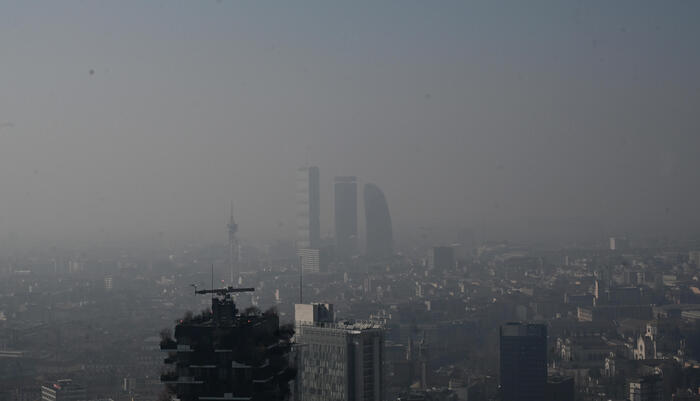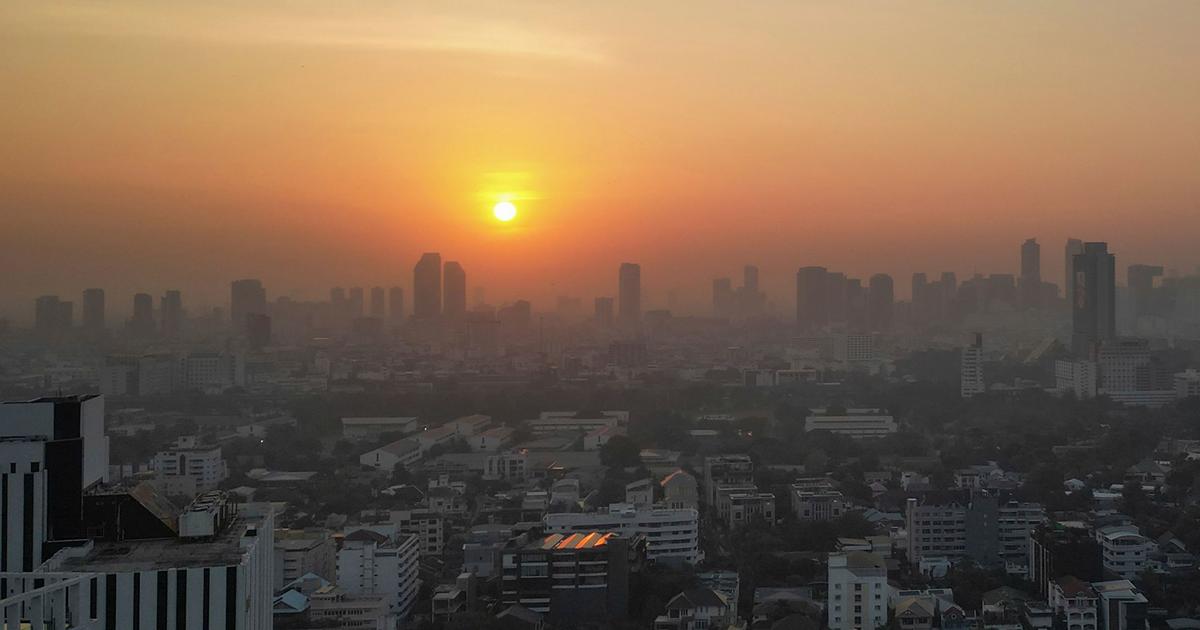A year made up of epidemiological assessments, work at home and time spent in front of the screens: 2020 will have been memorable, in particular because of the Covid-19 epidemic, initially detected in China before quickly affecting the whole world .
Beyond the health aspect, entire sections of the global economy have been affected by the pandemic.
Without forgetting our daily life: in the spring, nearly half of the planet's inhabitants were confined to avoid contamination, thus creating new habits at home.
Mortality, air traffic, unemployment, teleworking… Here is the summary of a landmark year in ten charts.
Variable waves of mortality depending on the country
Of course, these data should be taken with caution since not all countries record deaths in the same way.
But all the same, the mortality due to Covid-19 allows to have an idea of how the different countries were affected.
What do we observe?
Already, all states have not been impacted at the same rate.
We have chosen to compare the number of deaths reported to the population, in France, Germany, the United States, Brazil and China.
It is in France that the peak of the different waves has systematically been the highest.
China, populated by more than a billion inhabitants, has, conversely, recorded very few deaths reported to its population.
Above all, we see on this graph that the epidemic has not progressed at the same rate in different parts of the globe.
The United States is in its third wave, when France finishes “its” second, like all of Europe.
But Germany does not seem to have reached its second peak yet, to the point of having had to urgently reconfine before the end of the year holidays.
Planes nailed to the ground
The pandemic has led to a vast movement to close borders.
Many states, starting with France, have drastically limited arrivals to their soil, from March.
No more trips to a foreign neighbor or to the other side of the world.
Logical consequence, the frequentation of the sky has collapsed.
The most affected months were those of April, May and June, during which containment measures were taken in all the main European, Asian, and American countries.
The number of scheduled flights worldwide fell 66% in April and 69% in May compared to 2019. This trend began in February, with - 8% compared to the previous year.
At the time, China had - first - limited the activity of its airports.
Morning essentials newsletter
A tour of the news to start the day
Subscribe to the newsletterAll newsletters
Since the end of spring, air traffic has remained about half as low as last year.
And airline executives have regularly displayed their dismay.
As early as May, the CEO of the International Air Transport Association (Iata), Alexandre de Juniac, implored: "The financial situation of the companies is so serious that the immediate reimbursement [of the tickets] would have led companies probably to bankruptcy.
[…] We ask the passengers for help, it's true.
"
Tourism in pain
With planes grounded and borders closed, tourism has also been hit hard this year.
In France, the world's leading tourist destination, the number of overnight stays in hotels collapsed this year, with minimal recovery during the summer.
In Ile-de-France alone, 14 million tourists evaporated in the first half of 2020, according to a report from the Paris Region Institute which addresses the effects of the health crisis.
For the whole country, the loss is colossal: according to the tourist development agency Atout France, the fall in tourist spending has resulted in losses "between 50 and 60 billion euros" throughout the year.
The only amortization: the strong attraction of the French for travel in France, especially during the summer, between the two confinements.
We can see that the number of nights spent in hotels by tourists residing in France was slightly higher in August 2020 than in August 2019. Compared to its European neighbors, France is moreover one. little better output on tourism receipts: in July, the decline in tourism receipts was 41%, against 66% in Italy, and 75% in Spain.
"The results of the summer tourist season 2020 shows that attendance in France was overall better than expected last spring," said the Secretary of State for Tourism at the start of the school year.
It remains to be seen to what extent the November re-containment and the closure of ski lifts will contribute to a further decline in tourism revenue for the end of the year.
Contained air pollution
The confinement had a positive effect: that of reducing the level of air pollution caused by vehicles in the Paris region, which have disappeared from traffic.
“During the first week following the entry into force of the first containment, emissions of nitrogen oxides (NOx) and particulate matter (PM10) linked to road traffic had fallen by -70%,” recalls Airparif.
On average, "the concentrations of nitrogen dioxide (NO2) were lower by -20% to -30%", with peaks of decline at -50% "near the main roads".
On the other hand, the second confinement did not reduce the emissions of polluting particles in the same proportions.
NOx and PM10 emissions have fallen by only 20%.
For carbon dioxide (CO2), the drop was -70% at first containment.
It was only -20% in the first days of the second.
Troughs were however marked on the weekend, showing that the Ile-de-France residents applied confinement at the end of the week.
This difference is also explained by the surge in wood heating in November, a major source of fine particle pollution.
Massive unemployment in the United States
In the United States, the cessation of activity in the spring caused massive unemployment.
Every week, the number of new unemployed registered in the millions.
Consequence: The world's largest economy fell into a deep recession in the spring.
A stimulus plan has also just been validated by US parliamentarians to the tune of 900 billion dollars to send, in particular, checks to the most vulnerable families, as well as aid for small businesses and schools.
Black year for cinemas
Closed for three months in spring, again in November and December… Cinemas are, along with restaurants, among the big losers from the two confinements imposed in France this year.
Not surprisingly, it shows in the numbers.
Already 20% lower in January and February 2020 compared to the same months of the previous year, theater attendance fell sharply between June and October.
Less than five million tickets were sold in July, 74% less than a year earlier.
The month spared the most was that of September, with still half as many admissions as in September 2019. This did not save a cataclysmic year, with attendance down by 69.4% compared to the previous year. last year.
These figures are explained in particular by the health protocol requiring to leave an empty space between two occupied seats, but also by the fact that some blockbusters, which could have attracted hundreds of thousands of spectators, have delayed their release or finally favored platforms. like Netflix.
READ ALSO>
Closed cinemas, rise of platforms ... theaters fear the disaster scenario
Again forced to keep doors closed from October 30, cinemas were supposed to reopen on December 15.
Alas… The plateau then the slight rebound in the daily number of new Covid-19 cases convinced the government to postpone the deadline to next year.
A review clause will be considered on January 7.
Accelerated streaming progress
In response to the closure of cinemas, the consumption of video on demand, which was already on the rise, has accelerated markedly, with an undisputed winner: the Netflix platform, which has become a staple in television series and films.
In April, Netflix announced it had already gained nearly 16 million subscribers worldwide between January and March, against less than 10 million the previous year over the same period.
A rebound that is also observed according to the latest CNC barometer, published in October.
Amazon's platform, Prime Video, and Canal +, are the two other services that also seem to have benefited from a slight rebound in subscriptions from March.
2020 was the year of competition for these platforms, with the arrival of Apple TV + and Disney +, among others.
Social networks as the last link
Far from the others, near our screens.
To keep the link, many French people have spent more time on social networks this year.
Young people are particularly concerned: according to Médiamétrie, the time spent by 15-24 year olds on social networks has significantly increased.
While the latter tended to connect between 6 p.m. and 11 p.m., we can see that, in 2020, the increase in connections is made from 9 a.m., and this continuously until the beginning of the night.
One culprit is probably to point the finger: the TikTok application, which appeared in 2016, but whose use has exploded since the first confinement.
The entertainment short video platform is renowned for being particularly time consuming and addicting.
Zoom explosion on the stock market
2020 was the year of the explosion of teleworking and, with it, that of software previously known to a few, such as Zoom, a videoconferencing platform whose share exploded on the stock market.
Remote work meetings, family calls, aperitifs with friends… The application has allowed its users to maintain a semblance of links during the multiple confinements that have isolated a large part of the planet's population.
READ ALSO>
TikTok, Disney + and Zoom, the winning apps for one year of Covid-19
More generally, it is the tech giants (who have also developed videoconferencing software, such as Teams or Google Meet), which have stood out this year: between April and September, the titles of Alphabet (the Google's parent company), Facebook, Amazon, Microsoft and Apple have all climbed, with the iPhone maker gaining more than 80% over that period.
Real estate turned upside down
In Paris, price increases slowed in the third quarter of 2020, showing market stagnation.
Several real estate experts explained it to us: the attraction is growing for houses, spaces with terraces, as well as housing a little further from intramural Paris, and therefore more accessible.
In question?
The ability to telecommute more, making long journeys to work fewer and more bearable.
In November, a decline was also noted in the country's major cities, due to lockdowns which limited visits, and the economic crisis which makes households cautious when it comes to investing in more expensive housing per square meter. .
The winners in history are the rural departments, which have seen their share of Ile-de-France buyers increase this year.
READ ALSO>
Real estate in Ile-de-France: how will prices evolve in 2021?














